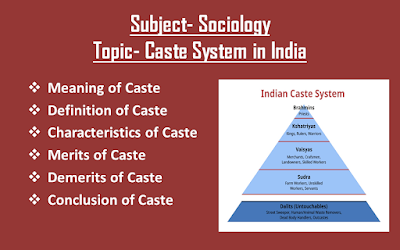Social Changes in India
# Social Changes in India
1. Social changes
(a) Change in family structure:- The impact of modern social forces is evident in the change of family structure. Basically join family system is prevalent in India in which the head of the family exercised absolute power over its members. He distributes work among family members. But due to modern forces, join family system is disintegrating. Now there is a trend towards the development of nuclear family.
(b) Changes in caste system:- Impact of modern forces is also evident in the institution of caste. Modern means of communication, growth of competitive economy and expansion of western education have shattered the traditional structure of caste. Thus, there is a transformation of rigid caste into modern mobile classes, certain caste have attained the privileges of upper classes while certain castes are losing their previous status.
(c) Changes in the stratification:- The original stratification of Indian society is based on the caste system which gives exclusive importance to with rather than individual achievements. Now birth is no longer a criterion of role allocations. It is gradually being replaced by the achievement system. Due to the impact of modern forces, Indian society is being transformed from feudal system to capitalistic system. Therefore, the stratification based on the class system is gradually emerging.
(d) Increasing mobility:- In India caste system prevents the mobility of the people from one occupation to another. But the new class system has encouraged social mobility. Further, legal compulsion has also encouraged social mobility and social change.
(e) Changes in the marriage institution:- In India, the Institution of marriage has undergone a tremendous change. Formerly people used to observe endogamy as regards. But due to the impact of modern races, the endogamous restrictions are gradually declining.
2. Political changes
Due to the impact of modern forces certain changes have also occurred in the political sphere of the Indian Society. Regulation of court laws, establishment of village Panchayats and expansion of local autonomy have changed the traditional social structure. In villages, castes Panchayats are declining and their functions are being transferred to the law courts. Further, there is a change in the pattern of leadership. In the late 19th and early 20th century, the leadership which participated in national movement was largely drawn from middle income groups. But now this opportunity of leadership is also available to low income groups.
3. Economic changes
Certain changes are also evident in economic sphere development of technology, transports and communication have largely influenced the economic structural. Specially, the agrarian economy is at present in a state of crisis. There is a shift from agricultural economy to national and industrial economic.
4. Religious changes
Religious conceptions are manifested in art, painting and folk culture. Traditional religious concepts determine individual behavior and social control. But development has taken place. After the advent of British rule, Indian society faced a progressive transformation. Subsistence economy was replaced by capitalist economy. Consequently, there is a development of non-religious and secular norms. Secular institution and association are developing along with a secular leadership for social control.
Watch video on YouTube





